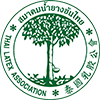Introduction: As the world’s largest natural rubber producer, Thailand’s production of natural rubber has a large impact on the global natural rubber supply. However, due to insufficient feedstock inventory during the low production period and abnormal phenology after the new round of rubber tapping season, the release of new rubber output was unsmooth in 2024, which aroused the market’s attention to the expected output reduction. Thailand will enter the production peak season in Q4, but there is still lurking peril on the supply side.
The output in the last production peak season was not strong, and the upstream inventory reserve in the low production season was insufficient in 2024.
In the last rubber tapping cycle (Q4, 2023 to Q1, 2024), the rubber tapping in North Thailand and Northeast Thailand was stopped in advance due to abnormal climate, and the production peak season in South Thailand also came in short of expectations. Therefore, the upstream processing plants had insufficient feedstock inventory from March to April 2024. The feedstock inventory of medium and large processing plants was only for the usage of 1.5-2 months, which was lower than the level in previous years, affecting the production of natural rubber. Therefore, the overall supply of natural rubber shrank.
In the new round of rubber tapping season, poor phenological conditions continued to disturb the production.
From a seasonal perspective, Northeast Thailand entered the rubber tapping season in mid-to-late April, and South Thailand entered the tapping season in mid-May, which basically conformed to seasonal laws. However, in the early stage of rubber tapping season, Northeast Thailand and Central Thailand experienced high temperatures and little rain, affecting the rubber tapping work. In South Thailand, the feedstock production was also influenced by the weather, and the release of feedstock output was slow. Since late July, the rainfall in the main production areas in Thailand was frequent, and significant rainfall in August resulted in floods in Northeast Thailand and North Thailand, which hindered the production of new rubber.
High feedstock prices put great cost pressure on upstream rubber processing plants.
The unsmooth feedstock production and the replenishment demand supported the purchase price of feedstock to be at a historical high. As of September 11, the purchase price of field latex in Thailand was THB 71/kg, up 50% YoY; and that of cup lump was THB 57.2/kg, up 35% YoY. The high feedstock prices led to high cost pressure on rubber processing plants, and the immediate processing profit loss was obvious. In addition, China’s buyers showed a low willingness to buy high-priced natural rubber, and China’s domestic prices were lower than the USD prices, causing an inverted profit in Thailand’s exports to China. From January to August, the production cost of STR20 in Thailand was $1,772/mt, up 26.4% YoY; and the average immediate theoretical profit was $-84/mt.
Insufficient release of new rubber output resulted in a notable decline in Thailand’s exports.
About 80% of Thailand’s natural rubber is exported. In 2024, the export volume of natural rubber in Thailand slipped significantly YoY. From January to July 2024, Thailand exported a total of 2,392.7kt of natural rubber, a YoY decrease of 310.6kt or 11.49%, the lowest level since the same period in 2016. The import enthusiasm in the Chinese market was hampered by insufficient release of new rubber output in Thailand, the cooling of non-standard arbitrage demand and the high import cost pressure, and Thailand’s exports of NR latex and mixed rubber showed a significant decline.
Thailand will enter the production peak season in Q4, and the output release needs to be focused on.
In Q4 2024, Thailand will enter the production peak season. Combined with the high-priced feedstock, it is expected that the natural rubber output will see a limited increment. However, it is still necessary to pay attention to whether the production growth can cover the reduction in the first three quarters. There are still risk points on the supply side that need attention. First, players need to pay attention to whether the output in the production peak season will be smooth. The low-than-expected production peak season last year resulted in a reduction in natural rubber output, so the market still has doubts about whether the output will be released smoothly in this year’s peak season. Second. Players need to pay careful attention to the impact of extreme climate on production. According to the latest report of the World Meteorological Organization, the probability of the La Nina phenomenon from September to November 2024 is 55%, and that will increase to 60% from October 2024 to February 2025. the La Nina phenomenon may lead to increased rainfall in the main production areas of Southeast Asia, and even cause floods, curbing the rubber tapping work. Third, players need to pay attention to the stimulation of high-priced feedstock on output. As of September 11, the price of field latex in Thailand rose to THB 71/kg. Under the current feedstock price, rubber farmers have a high willingness in rubber tapping work. However, South Thailand is facing problems such as an aging tree age structure and a decline in enthusiasm for new plantings. Therefore, it is necessary to verify whether high-priced feedstock can stimulate high output.
Source : Global Rubber Markets |








